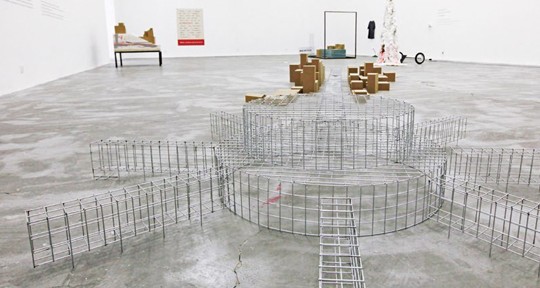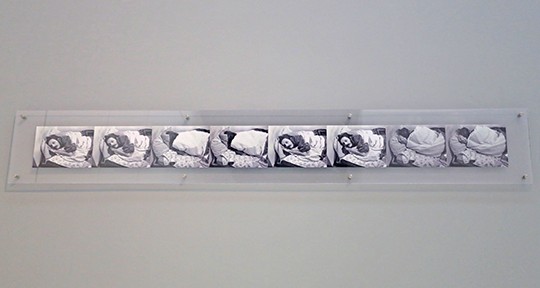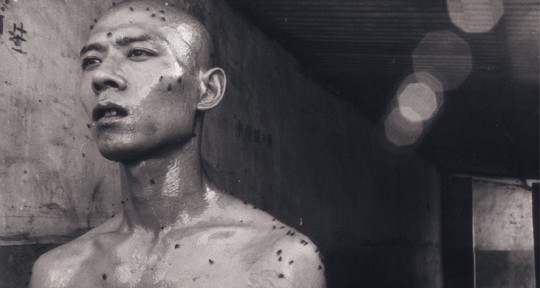This large-scale retrospective of the famous German photographer and Turner prize winner Wolfgang Tillmans (b. 1968) provided a complete tour through his enormously versatile oeuvre. Tillmans is known…
Read MoreThe all-new large-scale exhibition project “Local Futures: The Culture China Young Overseas Chinese Invitational Exhibition,” held at the He Xiangning Art Museum in Shenzhen, is organized with the sup…
Read MoreTHE EVERYDAY AND THE CORE—LlN XUE’S UNTITLED DRAWINGS Lin Xue (b. 1968) achieved instant fame when his work was shown at the 55th Venice Biennale this year. Curator Massimiliano Gioni had invited Lin to participate in “Il Palazzo Enciclopedico.” Prior to the show, no more than a thousand people had seen Lin’s work or had heard…
Read MoreGUNNAR B. KVARAN DIRECTOR OF ASTRUP FEARNLEY MUSEUM OF MODERN ART Dr. Gunnar B. Kvaran is the Director of the Astrup Fearnley Museet of Modern Art in Oslo, and the curator of the Biennale de Lyon 2013. In his concept for the biennial, Kvaran also reveals himself to be a radical conductor of narrative who…
Read MoreA British scientist once attempted to design a system of global weather forecasting based on a constant stream of data provided by 60,000-plus people. Nowadays, not only are we able to easily establish models for weather prediction, we can even imitate the unruly characteristics of Brownian motion to design other models for random movement. Such…
Read MoreThe exhibition “One Step Forward, Two Steps Back—Us and Institution/ Us as Institution” has a title that could be a slogan, and its programming schedule is no less intense. In just six short weeks, the Times Museum also organized artist workshops, seminars, round table discussions, a symposium, and publications. In her selection of artworks and…
Read MoreIn New Zealand’s post-apocalyptic film, The Quiet Earth (1985), three solitary protagonists survive a cataclysmic disaster in Hamilton. Surrounded by refuse and wreckage, the stunned survivors of this science fiction fallout yearn to connect with a place bereft of population. For Hou Hanru, “The remote New Zealand, a faraway ‘there’…can now be seen as a…
Read MoreHu Yun is neat and self-controlled, calm and collected. He seems to be the antithesis of a madman, yet he uses Foucault’s notion of “the ship of fools” to explain his practice. In the Middle Ages, people would use these endless maritime voyages to exile madmen, in part to restore the peace, and in part…
Read MoreSU WEI When we work together, many ideas, anxieties, and problems are interrelated and sometimes projected onto each other. Though these connections are not always apparent, our collaboration has been based upon a common ground we share when we discuss, initiate, and explore things together. Looking back on our past collaboration, I would say what…
Read MorePhotos from Zhang Huan’s 1994 piece 12 Square Meters have become emblematic of contemporary Chinese performance art. The artist rests in a moment of stasis, existing within different pulls and sensati…
Read MoreDear Lee Kit, You may be surprised to receive this somewhat sudden letter. I’ve been doing this letter exchange project for four years now, which will be published as a compilation this year. I’ve always wanted to translate the project into English, and after discussing it with a LEAP editor I have decided to try…
Read MoreIn the 1830s, the electric telegraph was invented. It was designed to organize English characters and punctuation according to the frequency with which they occur in text, and then establish a set of rules. Combinations of dots and dashes were used to represent each letter or sign, those occurring most frequently possessing the shortest assignments….
Read MoreOne salient feature of the exhibition “From Gesture to Language” is the anachronistic juxtaposition of ancient and contemporary. This is perhaps due to the participation of curator Pascal Torres Guardiola, who heads the department of chalcography—engravings, lithographs, and other printed matters—at the Louvre. The longstanding historical connection between engraving and printing in European arts here…
Read MoreIn 1989, two wildfires raged through Taiwanese society, leaving devastation and pain in their paths, while they continue burning to this day. In Su Yu-Hsien’s solo exhibition at TKG+ gallery, “Hua-shan-qiang,” these furious flames are refracted through the exhibition—photographs, a narrative video, and on-site installations—and the result is a beautiful yet tragic world rooted in…
Read MoreThe projection in “Entropy Wrangler,” Ian Cheng’s solo exhibition at Matt Moravec’s new space Off Vendome, is not a video work. It is a program where elements exist in a space defined by forces of causation individual to each figure. Projected in the basement of the Off Vendome space, Moravec describes it as a video…
Read MoreChen Zhou holds a knife to his wrist but doesn’t press down. This event early in his new film seems to express the artist’s present state more precisely than anything else—“I want to, but I can’t.” In Chen’s previous work Spanking the Maid, the same “inability” can be found, only on this occasion, the identity…
Read MoreFor readers unable to visit this exhibition in person: The perspective in the photograph to the left appears even stranger in real life. Ignore the stove, clay models, and flames and there is another perspective in a male figure, its body pierced several times with knives, looming gargantuan amongst “mountains.” Gazing beyond him to the…
Read MoreThe exhibition opens with two photographs of the artist, Tang Song, being taken away by police, stepping on the logo of “no returns” of the “China Avant-Garde Exhibition” at the National Art Museum in 1989. In a letter Tang Song had written to the late Dutch archivist Hans van Dijk soon after his release from…
Read MoreAround 30 years ago, Italo Calvino used a story from the Boccaccio classic The Decameron in a lecture as a prime illustration of the concept of “lightness.” Boccaccio paints the portrait of a hermetic Florentine poet in Guido Cavalcanti, the refined and solemn philosopher who is distrusted and cast out by Florence’s profligate socialites and…
Read MoreIn his work , Zhao Yao has found a sound and sustainable mode of exhibition that he calls “serial performance.” Born out of his suspicion with regard to all of the formalized complacencies created by contemporary art, the method allows him to engage in ongoing strikes against mechanisms of the exhibition as well as of…
Read More







